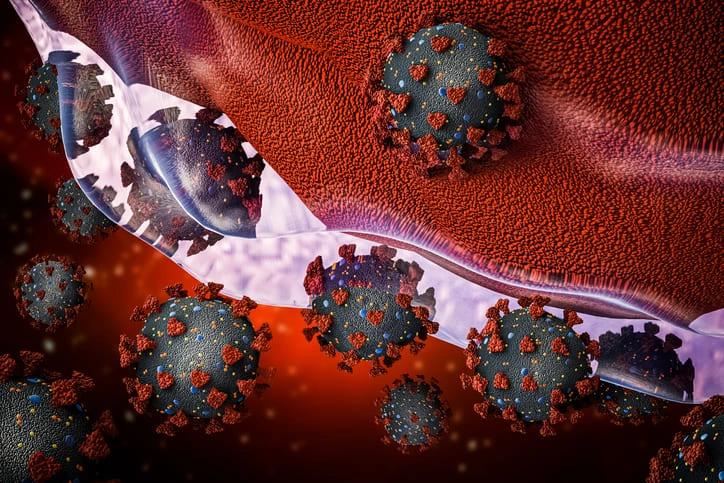KEY TAKEAWAYS
- The LAUNCH study aimed to evaluate the preliminary efficacy, safety, and tolerability of the combination of once-weekly selinexor and Xd.
- The enrolled patients had diverse characteristics, with a median age of 43 to 74 years and a range of time since initial diagnosis of 0.5 to 15 years.
- Once-weekly selinexor and dexamethasone in combination with cyclophosphamide or liposomal doxorubicin showed promising efficacy in patients with relapsed/refractory multiple myeloma.
Exportin 1 (XPO1) is involved in the nuclear export of tumor suppressor proteins (TSPs) and is associated with a poor prognosis and drug resistance (PI or IMiD) in multiple myeloma (MM). Selinexor is a novel, oral, first-in-class inhibitor of XPO1 that is selective. Selinexor (80 mg biweekly) plus dexamethasone (20 mg biweekly) (Xd) demonstrated activity against relapsed/refractory multiple myeloma in the STORM study. In preclinical studies, selinexor played a synergistic antitumor role with chemotherapy medications, but clinical data on combined treatment still needs to be provided. To evaluate the preliminary efficacy, safety, and tolerability of Xd plus chemotherapy agents in patients with RRMM. The LAUNCH study (NCT04877275) is a multicenter, open-label trial enrolling patients with relapsed/refractory MM who have received at least one prior treatment.
This study has two arms, and 25 patients will be enrolled in each arm—28d per cycle for both limbs. As of February 24, 2023, there were 28 enrolled patients (18 in XDd and 10 in XCd). There were 11 male patients and 17 female patients in total. The median age ranged from 43 to 74 years. The range of time since the initial diagnosis was 0.5 to 15 years. The median number of previous treatments was three (one to seven). There were eight patients with high-risk cytogenetic abnormalities (28.6%) and six patients with extramedullary disease (EMD) (21.4%). Four patients (14.3%) had prior autologous stem cell transplantation, while three (10.7%) received CAR-T therapy. 27 out of 28 patients (96.4%) were exposed to bortezomib, 23 out of 28 patients (82.1%) were exposed to lenalidomide, 9 out of 28 patients (32.1%) were exposed to pomalidomide, and 5 out of 28 patients (15.0%) were exposed to daratumumab. Four patients (20%) were exposed to cyclophosphamide and liposomal doxorubicin. The median length of treatment for all patients was 16 weeks (1-48 weeks). 8 patients were still receiving treatment. The effectiveness was evaluated in 22 patients. The ORR was 54.5% (1 VGPR and 13 PRs), including 56.3% in the XDd arm and 50% in the XCd arm. 7 patients had disease stability.
Thrombocytopenia (67.9%, 28.6%), leukopenia (57.1%, 28.6%), and anemia (50.0%, 28.6%) were the most prevalent hematological adverse events (All Grades, Grade 3). Nausea (64.3%, 3.6%), vomiting (50%, 7.1%), and fatigue (50%, 3.6%) were the most prevalent non-hematological adverse events (AllGrades, Grade 3). Most treatment-related adverse events occurred within the first eight weeks and diminished over time. Once-weekly selinexor and dexamethasone (Xd) in combination with cyclophosphamide or liposomal doxorubicin demonstrated promising efficacy in relapsed/refractory multiple myeloma. In addition, it was well tolerated, and no novel safety signals were identified.
Clinical Trial: https://clinicaltrials.gov/ct2/show/NCT04877275
Chunyan Sun, Baijun Fang, Guangxun GAO, Ai‑Li He, Fei Zhao, Junying Li, Chun Zhang, Weiming Li, Hui Cheng, Huili Cai, Bin Chen, Jingming Guo, Yu Hu/INTERIM ANALYSIS OF THE LAUNCH STUDY-A MULTICENTER, OPEN-LABEL STUDY OF SELINEXOR, DEXAMETHASONE PLUS CHEMOTHERAPY DRUGS IN RELAPSED/ REFRACTORY MULTIPLE MYELOMA/Inc, M. G. (n.d.). INTERIM ANALYSIS OF THE LAUNCH STUDY-A MULTICENTER, OPEN-LABEL… by Chunyan Sun. Library.ehaweb.org. Retrieved July 15, 2023, from https://library.ehaweb.org/eha/2023/eha2023-congress/386803/chunyan.sun.interim.analysis.of.the.launch.study-a.multicenter.open-label.html?f=menu%3D16%2Abrowseby%3D8%2Asortby%3D2%2Ace_id%3D2489%2Aot_id%3D27922%2Atrend%3D4016%2Amarker%3D4178



